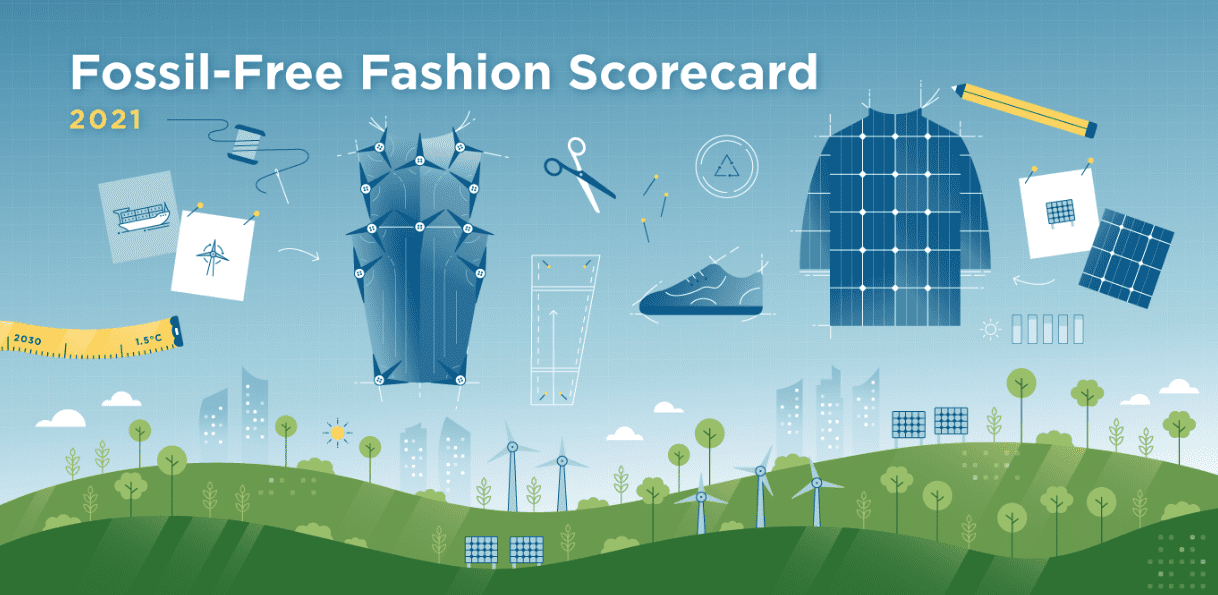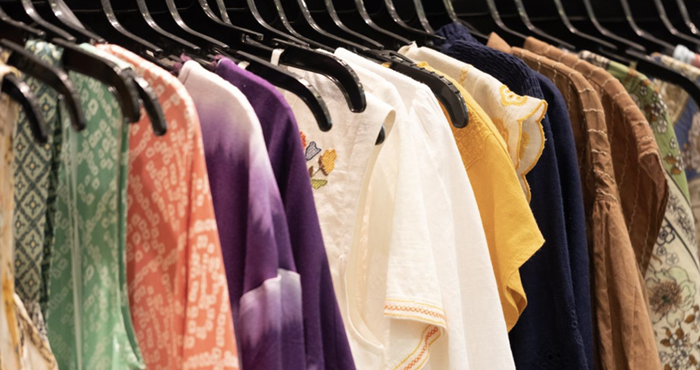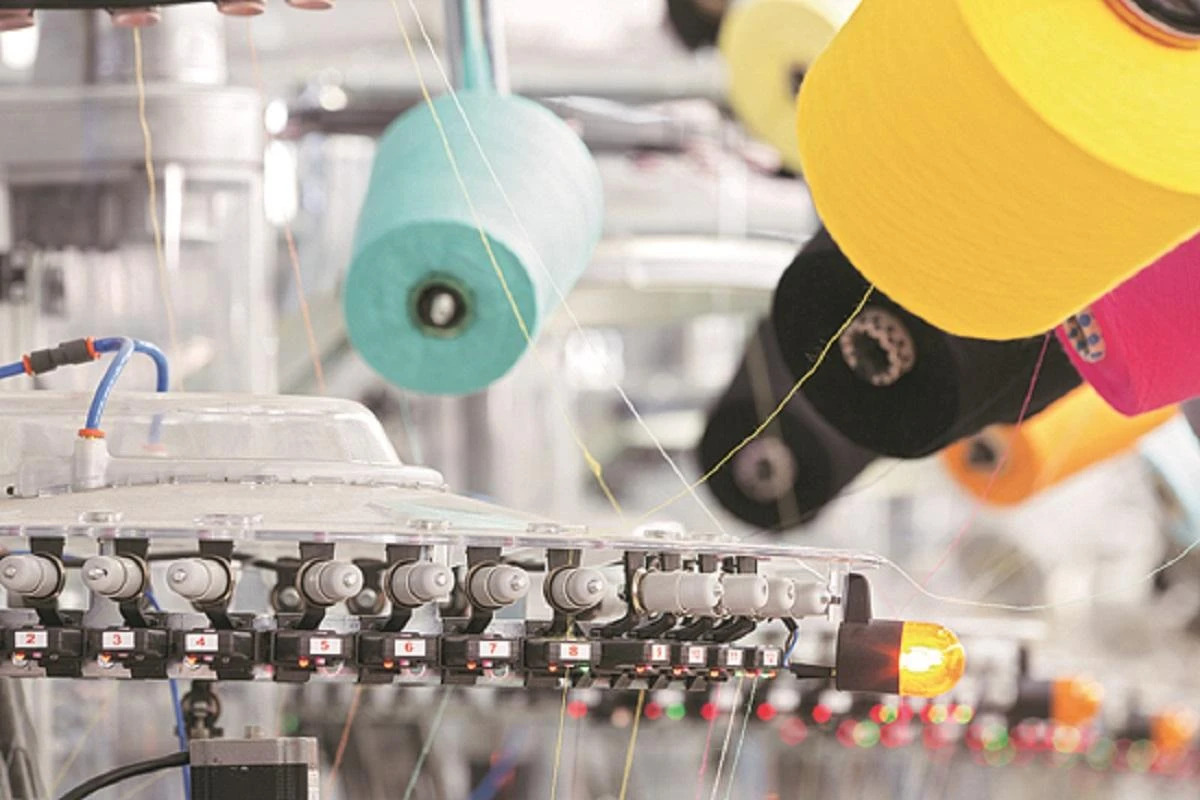FW
Indicating a strategic move towards international expansion and providing an upgraded physical retail experience, Victoria’s secret opened its newest store in Pavilion KL, Kuala Lumpur
The opening of the new Victoria’s Secret (VS) store in Pavilion KL, Kuala Lumpur is the latest sign of VS&Co’s strategic move towards international expansion and an upgraded, physical retail experience, especially in fast-growing markets like Southeast Asia.
Boasting a high-concept façade with two entrances and luxurious details like a two-tier chandelier, the 2,500 sq ft store highlights the brand’s shift from its historically provocative image to one focused on accessible luxury and sophisticated inclusivity.
This investment by VS & Co in brick-and-mortar stores is a critical part of the company's ‘Path to Potential’ strategy, designed to strengthen the core, ignite growth. While the brand reported a 1 per cent increase in full-year net sales during fiscal 2024 to $6.230 billion, with international sales growing by 11 per cent, physical retail remains central to its operation. The design of the Pavilion KL demonstrates the brand’s commitment to operational excellence and provides a modern shopping experience
The brand’s renewed focus on a more welcoming store design directly addresses past brand issues. VS is actively refreshing its identity by promoting diversity and broadening its product categories, including more athleisure and size-inclusive options, to connect with Gen Z consumers who value authenticity. This is supported by digital efforts, such as its strategic collaboration with Google Cloud for an AI-powered conversational assistant to improve the online customer experience.
However, the real challenge for this global growth plan - which projects FY 2025 net sales between $6.2 billion and $6.3 billion - will be the brand’s ability to turn a beautiful store aesthetic into sustained cultural relevance and market share gains against direct-to-consumer competitors that champion body positivity.
Gymshark opened its first US flagship store on December 13 at 11 Bond Street, NYC, signaling a major step up in the online-first brand's strategy to integrate physical retail into its business model. This huge investment in a prime New York spot - a three-story, 13,000 sq ft experiential space—is designed to transition the company from a digitally native startup to a genuine omnichannel apparel powerhouse. This strategic move aims to deepen its relationship with the profitable North American market, which has been a primary driver of its estimated £500+ million valuation.
Central to the flagship's design is its focus on community engagement, a key feature that sets the brand apart. The store features an entire floor dedicated to meet-and-greets, live podcasts, and fitness talks, along with unique elements like bespoke bodegas and 3D-printed mannequins modeled after community members.
This emphasis on experiential retail is crucial for building loyalty in the fiercely competitive athleisure market, where brands like Lululemon and Nike dominate the physical space. Gymshark is looking to convert its massive social media following into high-value, in-person sales.
While the Bond Street flagship strengthens its physical presence, founded in 2012 by Ben Francis, the company faces the challenge of maintaining its fast growth trajectory while managing the higher operating costs and complex logistics of a global retail network. The brand's commitment to this large-scale physical expansion, highlighted by the December 13th opening, shows its confidence in capturing a larger piece of the US market. It's using the store as a model for future international rollouts and proving its capability as a full-spectrum fashion and fitness brand.
Scoop will return to Olympia National from February 8–10, 2026, promising an exceptional showcase of leading Danish designers that reinforces its standing as the UK’s most curated and forward-thinking fashion trade show. Recognized for its premium edit, gallery-like setting, and global perspective, Scoop continues to offer buyers unparalleled access to international talent. This season, the focus is squarely on Denmark, a country celebrated globally for its clean aesthetics, thoughtful craftsmanship, and effortlessly modern approach to style.
This edition of Scoop will feature a hand-selected collective of top Danish names, illustrating the breadth and modernity that defines the country's design landscape. The Danish offering includes beautifully refined womenswear, considered lifestyle collections, and contemporary accessories, representing some of the most commercially compelling and internationally admired talent available today.
True to Scoop’s reputation as a meticulously curated platform, Karen Radley, Founder and Curator’s edit prioritizes collections that introduce something fresh to the UK market. She seeks brands with strong identities, responsible production values, and pieces that resonate with the modern consumer.
The Scandinavian lineup is compelling, featuring highly sought-after names such as Enamel Copenhagen, Gustav, Part Two, Mos Mosh, Nuni Copenhagen, InWear, Soya Concept, Woden, St. Tropez, Soaked in Luxury, and mbyM. Together, they represent a vibrant spectrum of Danish fashion, spanning everything from wardrobe essentials and feminine tailoring to modern lifestyle items.
Karen Radley states, Danish design has an extraordinary ability to balance ease, beauty, and purpose. It’s modern, commercial, and incredibly relevant to how we live and dress today in the UK. Scoop remains the essential buying destination for fashion retailers seeking truly exceptional design and discovery in an intimate, inspirational environment.
Brazilian cotton prices have declined to a 16-year low due to a combination of factors, primarily centering on abundant supply and weak demand, both domestically and globally.
In real terms, the CEPEA/ESALQ Index for cotton (payment in 8 days) fell to its lowest level since September 2009 in November 2025, after six consecutive months of decline. The average price in November 2025 settled around BRL 3.4505 per pound (approximately $0.65). This price was about 12.5 per cent lower than the price in November 2024
A major global cotton producer and the world's leading exporter, Brazil has seen high production. This strong supply has flooded the domestic market, putting intense downward pressure on prices. By late November 2025, over 81 per cent of Brazil's 2024-25 crop had been processed. Local textile industries and domestic buyers are purchasing minimal volumes, operating at diminished capacity, and are cautious about new transactions.
Global cotton prices have also softened, and the CEPEA/ESALQ Index has remained below the export parity price, signaling little support from external markets. Producers facing cash pressure or needing to clear inventories have shown greater flexibility in accepting lower prices, which further adds to the downward momentum.
Activity in the spot market remains restricted, with most market participants focused on fulfilling existing long-term contracts. However, traders are already negotiating new deals for early 2026 and for the cotton from the next season. Low prices are tightening profit margins for Brazilian growers, making it difficult for many to break even, especially those with lower-than-expected yields.
In short, the strong harvest has created a surplus that the current weak global and domestic textile demand cannot absorb, leading to a sustained and sharp fall in prices.
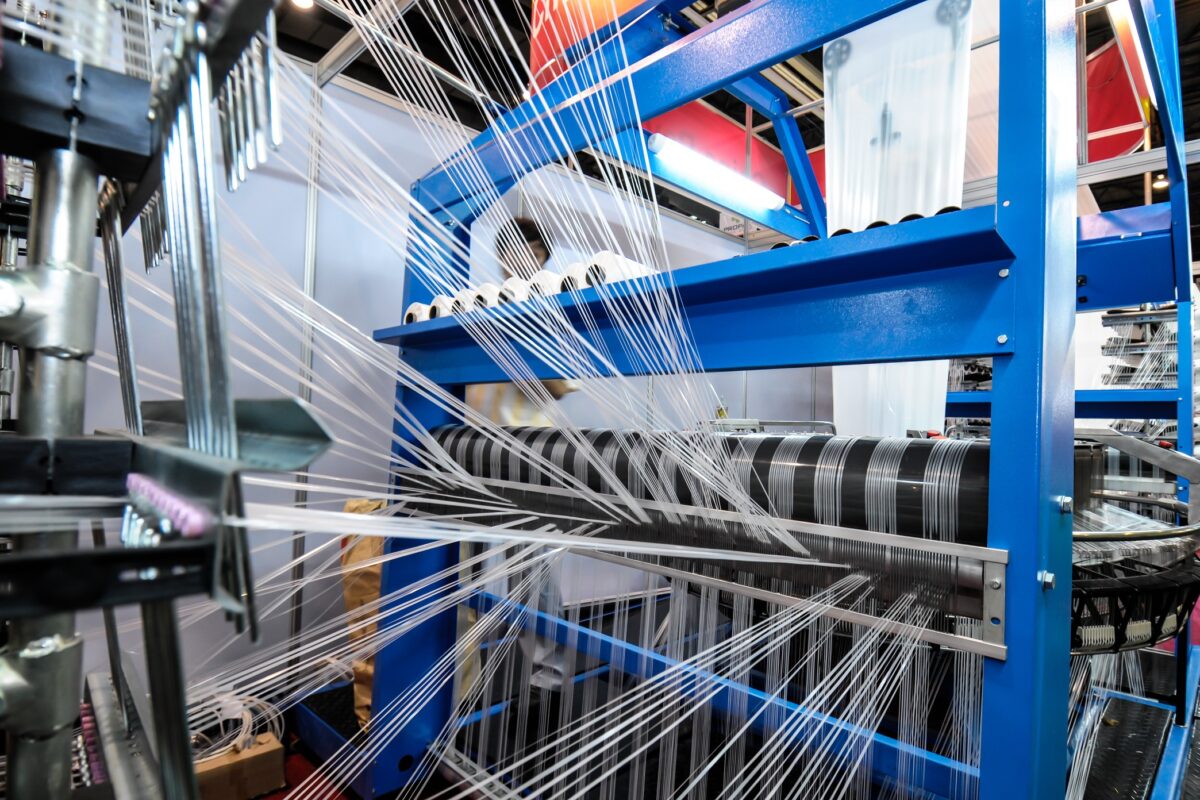
India generates nearly eight million tonnes of textile waste every year, placing the country at the center of the global circular economy though it is rarely acknowledged as such. While much global attention centers on futuristic recycled fibers and chemical breakthroughs, a decades-old, quietly efficient revolution has shaped the southern textile belt. In Tirupur, the cradle of India’s knitwear industry, hundreds of mechanical recycling hubs have grown into one of the world’s most important textile revival systems, converting mountains of discarded fabric into millions of tonnes of usable fiber.
Visitors who walk through these facilities often leave stunned. What they discover is a paradoxical ecosystem: advanced machines that rely on intensely human labor, immense material streams that depend on purity, and a globally competitive recycling economy held together by improvisation, ingenuity, and sheer scale.
The mechanical backbone of the circular economy
At the heart of this industrial engine lies mechanical recycling, a system that relies on high-power shredders, openers, and carding machines to tear textile waste back into usable fiber. The process is deceptively simple but technologically demanding. Facilities across Tirupur run a mix of machines whose capabilities directly determine the strength, length, and usability of the recycled fiber they produce.
Standard units typically operate upgraded Chinese lines, robust workhorses that efficiently process cotton-rich clippings while maintaining acceptable fiber length. Premium operators, by contrast, have invested in advanced Turkish or Austrian machinery capable of preserving greater fiber length. The difference in output quality between these two systems is real but often narrower than assumed. Decades of local innovation, tweaks, retrofits, custom drums, and optimized blade settings, have pushed Indian machines to global levels of performance.
Yet even the most advanced machines cannot escape the fundamental laws of recycled fiber. The shorter the fiber becomes, the more reinforcement it needs. For most garment-grade applications, recyclers must blend their output with up to 40 per cent recycled polyester to ensure adequate yarn strength. But some of Tirupur’s most exacting recyclers have developed a surprising specialty: ultra-pure input streams, sometimes achieving contamination rates as low as one per cent. Such purity is not a machine-made miracle but the result of something far more human.
Why India imports clean waste
Contrary to global narratives about circularity, India’s mechanical recycling sector does not rely on discarded consumer garments. Instead, its engine runs on pre-consumer waste, cutting-floor clippings from knitwear factories. These clippings, generated in large volumes within Tirupur itself, offer the ideal characteristics for mechanical fiber recovery: cleanliness, fiber uniformity, and predictable composition. The table reflects the structure of India’s textile waste stream, illustrating both the abundance and the hierarchy of what actually gets recycled.
Table: Waste stream and utilization in India’s textile recycling sector
|
Waste stream category |
Estimated annual volume (kilo tonnes) |
Primary use in recycling |
Challenges |
|
Pre-Consumer Waste (Clippings) |
3,265 |
Preferred Feedstock |
Cleaner input, higher-quality output. |
|
Post-Consumer Domestic Waste (PCW) |
3,944 |
Low Utilization/Downcycling |
Inadequate sorting prevents value recovery. |
|
Imported Waste |
584 |
Supplement Clean Feedstock |
Sourced from places like Bangladesh, Mexico, US, and EU to maintain consistent quality supply. |
|
Total Waste Managed Annually in India |
7,793 |
India is a Global Recycling Hub |
Source: Fashion for Good / IDH (2020s Estimates) |
This data reveals the irony at the core of India’s recycling landscape. Despite nearly four million tonnes of domestic post-consumer waste, very little of it enters high-value recycling streams. Instead, recyclers import waste often from as far as Mexico not because India lacks material, but because domestic post-consumer waste is too mixed, too stained, or too poorly sorted for efficient processing. The import of clean clippings, particularly cotton-rich ones, acts as a stabilizer for the mechanical mills. Without it, the machines would run slower, produce shorter fibers, or require heavier polyester blending each of which erodes profitability.
Where machines depend on humans
Behind every bale of recycled fiber lies the most labor-intensive and low-tech step of the process: sorting. Before textile waste can enter the shredders, skilled workers separate it by color, material, and contamination level. This is no small task. A single mis-sorted polyester piece can contaminate an entire batch of cotton, lowering quality and value.
The manual sorting floors of Tirupur are immense. Rows of workers many of them women sit before mountains of textile scraps, moving at a speed and precision no machine has yet replicated. It is here, in these labor hubs, that India’s recycling sector shows its true scale as an employer. Across India, an estimated four million people work in the broader textile waste ecosystem, and sorting is its largest job creator.
The cost structure reflects this reality. Sorting and waste procurement together comprise more than 60 per cent of a recycler’s daily operating cost. Machines may define the final product, but humans define both the quality and the economics.
The pressure valve for a waste-heavy ecosystem
Not all textile waste is created equal. Materials with high contamination, blended fibers, elastane-heavy jerseys, or low-grade imports cannot be remade into high-quality yarns. For these streams, downcycling acts as a crucial release valve. Waste unsuitable for spinning is shredded further and transformed into non-woven textiles used in insulation, automotive interiors, mattress fillings, filtration media, or industrial wipes. This downcycling layer prevents hundreds of thousands of tonnes of material from entering landfills. It also provides steady revenue for recyclers, creating a diversified ecosystem that absorbs different grades of waste without collapsing under inconsistent input quality.
The Next Leap: Automation, AI, and the future of recycling
The next frontier for Tirupur lies in solving the bottleneck that has limited the sector’s growth for decades: sorting. Recognizing the lost value in poorly sorted post-consumer waste, several Southern Indian recycling groups have begun experimenting with technologies that could fundamentally reshape the ecosystem.
AI-powered optical scanners, near-infrared (NIR) sorting systems, and semi-automated conveyor-based classification lines are now being tested in pilot plants. Their potential is transformative. Machines that can recognize fiber composition and color with precision could unlock India’s vast domestic post-consumer waste supply, redirecting it from landfills into high-value recycling streams. Early financial models indicate that sorting hubs adopting automated classification stand to increase revenue by nearly 10 per cent, thanks to the higher value of clean, categorized waste.
A circular engine at the crossroads
South India’s textile recycling cluster is among the world’s largest, most advanced, and most understated circular economies. It is a system built on contradictions: high-tech machines paired with manual sorting, local waste supplemented with imported clippings, and global environmental goals met through human-powered precision.
As automation, AI-assisted traceability, and domestic post-consumer waste systems mature, Tirupur is poised to evolve from a mechanical recycling powerhouse into a fully integrated circular economy hub. What emerges next will not just influence India’s textile sector but could redefine how the world understands and implements industrial-scale recycling. The hidden mills of Tirupur are no longer just recycling fabric. They are reimagining the future of waste, work, and the circular economy itself.
Marking a strategic commitment by its parent company, Jack and Jones recently opened its first two standalone stores in the UAE. The stores were opened at Al Wahda Mall, Abu Dhabi, and City Centre Al Zahia, Sharjah. This move prioritizes direct-to-consumer (B2C) growth in the Middle East.
Historically, the brand has operated through wholesale distribution and local partnerships. This strategic shift to dedicated physical stores is designed to capture a larger portion of the UAE's highly competitive and affluent apparel market, which serves as a regional retail gateway to the Gulf Cooperation Council (GCC) bloc.
Founded in 1990 and recognized globally for its denim and casual menswear, Jack & Jones is leveraging these new UAE stores as crucial vehicles for delivering the full, immersive brand experience. Establishing this B2C footprint is vital for boosting brand awareness and complementing its existing market presence.
Entering the UAE, one of the world’s most dynamic fashion markets, involves substantial operational challenges, including intense competition and the necessity of creating localized product assortments to satisfy diverse consumer tastes.
However, this expansion is supported by Bestseller’s strong fiscal performance, which provides the necessary capital for this aggressive growth. The success of the Abu Dhabi and Sharjah outlets will be critical. They will function as a case study for the future rollout of more stores across the Gulf, proving the company’s capabilities as a true retailer in a highly demanding global environment.
On September 15, 2025, the European Commission initiated an Anti-dumping (AD) investigation (case AD738) concerning imports of PET spunbond from China, acting upon a complaint filed by the relevant European Union industry.
This proceeding reached a significant milestone on December 2, 2025, when the Commission subjected these imports to registration. Effective December 3, 2025, this move mandates that all users must register their imports with customs authorities, who will now meticulously monitor the import flows.
Making these imports subject to registration is critical because it empowers the Commission to impose definitive anti-dumping duties with retroactive effect. The EU industry has publicly welcomed this step and expressed gratitude to the European Commission for its efforts to re-establish fair competition (a level playing field) in the EU market.
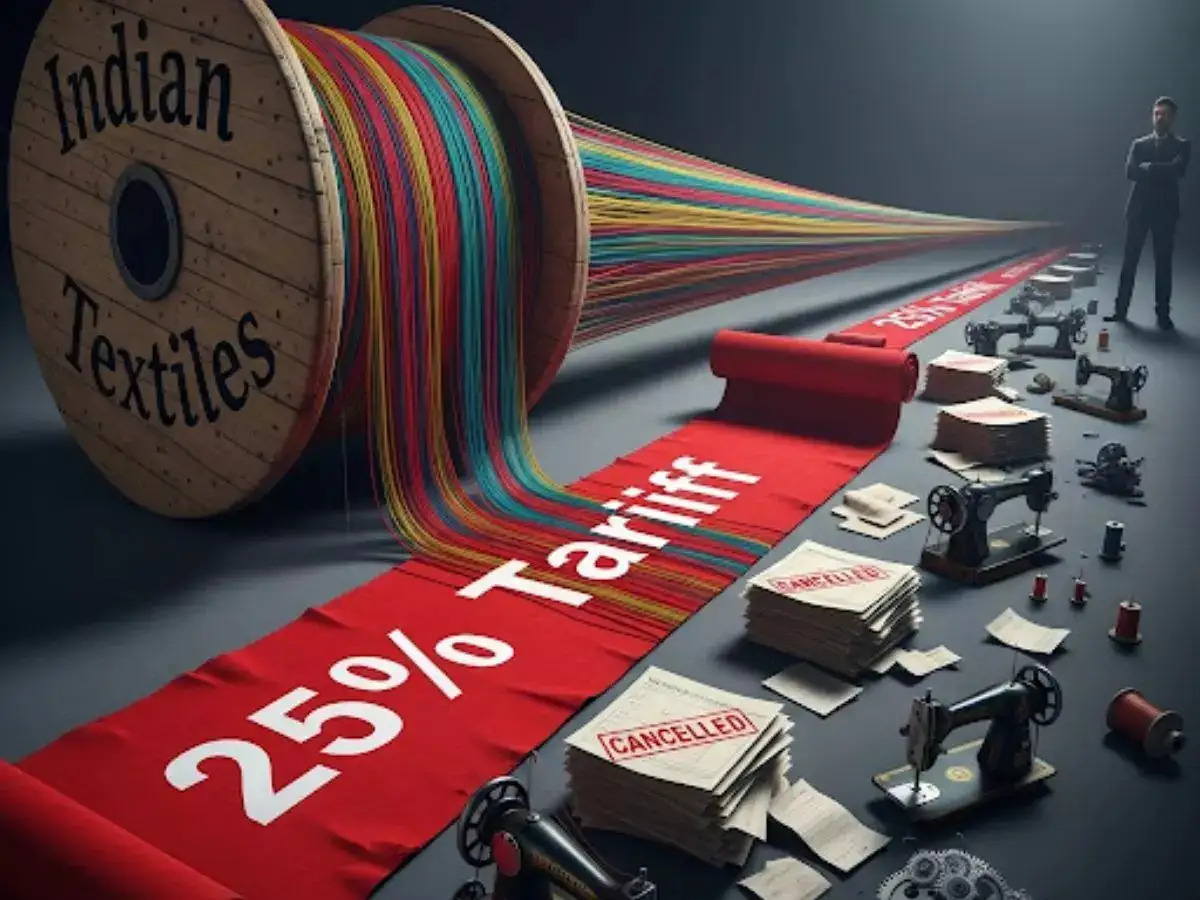
India’s textile and apparel industry is facing an unexpected mid-cycle rupture that is reshaping the sector’s economics far faster than policymakers anticipated. What began as a favourable season for the spinning and raw-material economy, egged on by a weak rupee and heavy government-led cotton procurement has now unravelled into a broad-based export contraction triggered by steep new US tariff slabs. The sector, is suddenly staring at a liquidity spiral that is throttling production, delaying payments and disrupting labour flows in major clusters like Tiruppur, Surat, Ludhiana and Mumbai.
The turning point was in August 2025, when the US raised import duties on several Indian textile categories as high as 50 per cent. Expected to be a temporary pressure point as trade negotiations progressed, the duties have instead persisted, altering procurement behaviour among global buyers and overshadowing the price advantage that depreciating domestic currency and competitive cotton prices typically bring to exporters.
A value chain in disequilibrium
The Indian textile value chain has historically moved in tight correlation: when cotton prices firm up, spinning mills adjust output; yarn prices set the tone for weavers; garmenting units respond to buyer cycles. In November 2025, however, these links have frayed.
Southern India’s spinning belts of Coimbatore, Erode, Salem and parts of Andhra Pradesh are reporting muted activity even as raw cotton prices remain high. The Cotton Corporation of India’s (CCI) aggressive MSP procurement increased fibre prices by Rs 300 to Rs 500 per candy, lifting sentiment among cotton growers. A weaker rupee, nearing Rs 86.2 per US dollar, should have ideally boosted export competitiveness across the chain. Yet, mills are unable to pass on any gains because demand from garmenting units remains sharply depressed.
Data from the Confederation of Indian Textile Industry (CITI) confirms the imbalance. Textile and apparel exports between April and October 2025 fell 1.57 per cent year-on-year. The sharper blow, however, came in October, when cotton yarn, fabrics and made-ups registered a 13.31 per cent decline, the steepest monthly fall in two years. This decline, which typically signals weakening global retail offtake, has been compounded this time by halted US shipments and delayed payments.
A Mumbai-based yarn trader captures the sector’s anxiety succinctly, saying that buyers are unwilling to commit even to small consignments as long as tariff uncertainties linger. With invoices stuck in transit and garmenting units tightening cash flows, fresh bookings have slowed dramatically, creating a downstream pressure that spinning mills are struggling to absorb.
The US duty shock
The tariff increase US has emerged as the most disruptive force in India’s global textile positioning this decade. India’s textiles traditionally do not enjoy the same duty-free access that Bangladesh, Vietnam or Cambodia receive under the US GSP or preferential trade agreements. But with the new slabs stretching up to 50 per cent on certain finished apparel categories, India’s cost disadvantage has widened to 30-35 per cent.
The impact is visible across order books. US buyers, who historically contributed 29 per cent of India’s apparel exports, have cut volumes drastically, in some cases by as much as 70 per cent. The sharpest decline has been recorded in mass-market cotton apparel, home textiles and low-value knitwear segments that constitute the backbone of India’s MSME-led garmenting clusters.
This drop is already altering the financial ecosystem. MSMEs, which make up nearly 70 per cent of India’s textile production units, are now confronting an acute cash squeeze. Payments from overseas clients are being delayed beyond customary 60-90 day cycles, forcing units to rely heavily on working capital loans at a time when borrowing costs remain high. Industry reports estimate that garment units in Tiruppur are holding unsold inventories worth nearly ₹6,800 crore, while several Ludhiana knitwear exporters have reportedly begun furloughing workers to manage fixed costs.
Credit rating agency ICRA’s latest sectoral review reflects the seriousness of the shock. It has revised its outlook for India’s export-oriented apparel industry to ‘Negative’ for FY2026, projecting a revenue decline of 6-9 per cent and a decline of operating profit margins from 10 per cent in FY2025 to nearly 7.5 per cent. This margin drop could rise further if tariffs persist into mid-2026, risking long-term buyer migration to more cost-efficient sourcing destinations.
The liquidity spiral
The most immediate consequence of the tariff regime is the liquidity freeze gripping export hubs. The payment cycles of garment exporters already stretched in a slow global retail environment have increased by an additional 45-60 days, choking the cash flows of small and mid-sized vendors. Banks, wary of rising exposure in the sector, have begun restricting credit limits for high-risk MSMEs. Industry associations warn that Non-Performing Assets (NPAs) in textile-heavy districts could rise by 20-25 per cent over the next two quarters if relief does not arrive.
Garmenting clusters are particularly vulnerable because they operate on thin margins and depend heavily on pre-shipment and post-shipment credit. With buyers deferring shipments, many units are now sitting on completed orders that cannot be dispatched due to payment bottlenecks. The slowdown is also visible in powerloom hubs like Bhiwandi, where loom utilisation reportedly dropped below 40 per cent in November for the first time since the pandemic-era lockdowns.
Gokaldas Exports’ playbook for survival
While the broader sector reels under tariff pressure, a few large players are adapting their expansion strategies to cushion external shocks. Gokaldas Exports, one of India’s oldest and most diversified apparel exporters, illustrates how manufacturers are seeking geographical and product diversification to reduce dependence on US markets.
Founded in 1979, the company built its early business around supplying woven apparel to global brands, but over the past five years it has systematically expanded into knitwear, man-made fibres (MMF) and specialised performance wear. This repositioning is deliberate: MMF-based products face lower volatility in cotton prices and offer wider market access beyond the US, particularly in Europe, the Middle East and Japan. The company’s recent acquisitions have also strengthened its vertical integration, enabling it to reduce lead times at a moment when buyers are increasingly prioritising speed and reliability over cost alone.
Market sentiment remains cautiously optimistic toward the company’s model. Even amid tariff turbulence, Gokaldas Exports’ stock has rallied intermittently on hopes of a pending trade agreement between India and the US. Investors view its strategy coupling government PLI incentives with non-US market expansion as reflective of how the broader industry might restructure to withstand geopolitical risk.
A race against time for policy relief
The outlook for India’s textile and apparel sector now hinges on a narrow set of uncertain variables. The most critical among them is the outcome of the India-US trade negotiation currently underway. Early signals suggest progress, but with US election considerations and India’s need for broader market assurances, timelines remain opaque. Any delay risks accelerating India’s loss of market share to Bangladesh, Vietnam, Turkey and Mexico, countries already positioned to absorb diverted orders.
Yet, amid export turmoil, India’s domestic textile economy is on a different path. The sector is projected to reach $646.96 billion by 2033, driven by rising incomes, premiumisation of apparel, and a nationwide push towards sustainable, MMF product lines. This difference between global stress and domestic growth could give the sector partial insulation, provided the government intervenes swiftly to ease liquidity and expedite tariff negotiations.
Industry leaders warn that without timely relief, structural damage could set in, leading to labour displacement, permanent shutdowns of MSME units and a long-term reconfiguration of global sourcing routes away from India. For now, the industry waits for clarity, its hopes pinned on trade diplomacy, domestic demand resilience and the entrepreneurial ability of manufacturers to adapt their business models in an era defined by volatility.
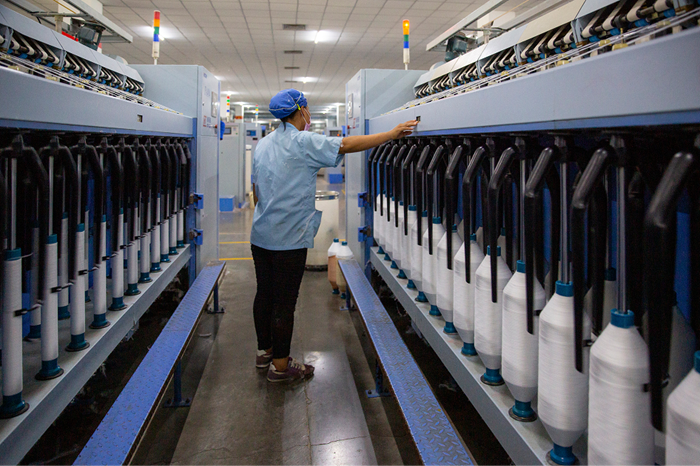
The global apparel sourcing business is redefining the metrics of success beyond traditional labor costs. Led by geopolitical risks, consumer demands for sustainability, and the need for greater agility, brands are adopting multi-regional strategies and looking to a new generation of sourcing partners. The old paradigm of ‘Europe is premium, Asia is cheap’ is giving way to a risk-averse, and value-driven approach.
New metrics for a new era
The most successful brands are no longer just comparing price per unit. They are evaluating the total landed efficiency of a supply chain. This holistic approach considers factors like lead times, shipping costs, inventory risk, and supply chain transparency. A 2024 report by the US Fashion Industry Association (USFIA) highlights this trend, revealing that a record high percentage of companies are sourcing from over 10 countries to reduce growing market risks.
Proximity and flexibility: The rise of nearshoring is a direct response to the need for speed and adaptability. Countries closer to major markets like Portugal is to Europe offer shorter lead times and lower Minimum Order Quantities (MOQs), enabling brands to quickly test new trends with capsule collections and react to real-time consumer demand.
Sustainability as a differentiator: Sustainability is no longer a marketing buzzword but a core operational metric. A 2024 USFIA study found that over 60 per cent of surveyed companies plan to invest more in sourcing sustainable and recycled textile materials. Manufacturers in countries like Portugal are building sustainability into their processes, from using solar-powered facilities to sourcing local yarns, offering a genuine value proposition beyond a simple eco-label.
Technological integration: The apparel supply chain is becoming increasingly digital. Technology, from AI-powered forecasting to blockchain for transparency, is a critical new metric. These tools allow brands to better predict demand, optimize supplier selection, and provide the end-to-end traceability consumers are now demanding.
Beyond Portugal, emerging sourcing hubs
While Portugal is a big player, it's not the only emerging destination. Brands are actively diversifying their networks, creating a more resilient and globally distributed sourcing map.
Turkey, the bridge between continents
Turkey has long been a critical supplier for Europe, leveraging its unique geographical location. With a well-established and vertically integrated textile industry, Turkey offers quick turnaround times and access to a variety of raw materials. Brands like Asos have increased sourcing from Turkey for their fast-fashion lines, using its proximity to avoid the long lead times and shipping costs associated with Asia.
Mexico and the CAFTA-DR region
For US brands, Mexico and the countries in the Dominican Republic-Central American Free Trade Agreement (CAFTA-DR) are becoming significant nearshoring partners. A USFIA study shows a noticeable increase in sourcing from Mexico and CAFTA-DR members. This is driven by the desire for shorter lead times, lower transportation costs, and reduced geopolitical risk. However, a key challenge remains a lack of sufficient access to textile raw materials in the region.
India, the rising powerhouse
India is rapidly emerging as a leading apparel sourcing destination. The 2024 USFIA Benchmarking Study found that for the first time since 2014, more US fashion companies reported sourcing from India than from Bangladesh. Nearly 60 per cent of executives surveyed plan to expand sourcing from India over the next two years, more than any other Asian country. India's appeal is pushed by its local textile manufacturing capabilities, which reduce its dependence on imported components and offer a stable, cost-effective supply chain.
The future of apparel sourcing
The shift isn't a replacement of Asia but a diversification. China, Vietnam, and Bangladesh remain essential for their scale and cost-effectiveness. However, the modern sourcing strategy is about creating a balanced portfolio of suppliers. The smartest brands are no longer picking one region over another but are building multi-region strategies to balance cost, agility, and risk. This great migration is about building a supply chain that is not just efficient, but also resilient, transparent, and aligned with the values of the modern consumer.
The Advanced Recycling Conference (ARC) 2025 successfully convened nearly 220 experts from 28 countries to highlight pioneering advancements and strengthen industry collaboration in recycling diverse materials, including plastics, textiles, and automotive waste.
This year's program focused on the continuous optimization of core technologies, from physical methods like extrusion and dissolution to chemical solvolysis, biochemical enzymolysis, and thermochemical treatments such as pyrolysis and gasification. A key element driving this optimization is the integration of cutting-edge digital solutions, including AI-driven sorting and blockchain traceability, which are essential for ensuring reliable feedstock quality and scaling circular systems amid fluctuating waste volumes.
ARC 2025 also addressed the critical need for chemical recycling to build credibility by demonstrating clear advancements in process efficiency and transparency throughout the value chain. Innovative strategies were explored for complex sectors like textile and automotive recycling to overcome challenging material blends and increasing regulatory pressures. Furthermore, the integration of Carbon Capture and Utilization (CCU) emphasized the industry’s shift toward truly sustainable circular business models. A significant recurring theme was the urgent need for expanding recycling infrastructure to support the large-scale deployment of these advanced technologies and meet ambitious regulatory targets.
The conference facilitated extensive networking, strengthening partnerships, which was further enhanced by a site visit to Chemiepark Knapsack, where participants observed industrial-scale deployment of advanced recycling technologies in action.
By bringing together stakeholders from the technology, policy, and investment spheres, ARC 2025 outlined a clear path for achieving ambitious EU targets. These goals include increasing post-consumer recycled plastics in packaging to between 10 per cent and 35 per cent by 2030 and embedding 25 per cent recycled content in new vehicles. These cooperative efforts are crucial for overcoming challenges related to feedstock availability, variability, and infrastructure gaps, ultimately fueling growth in renewable carbon value chains and advancing the defossilization of the chemical industry.
The Advanced Recycling Conference was supported by visionary sponsors dedicated to advancing recycling solutions, including Gold Sponsor Siemens and Bronze Sponsors Buss ChemTech, Erema Group, and Starlinger.

